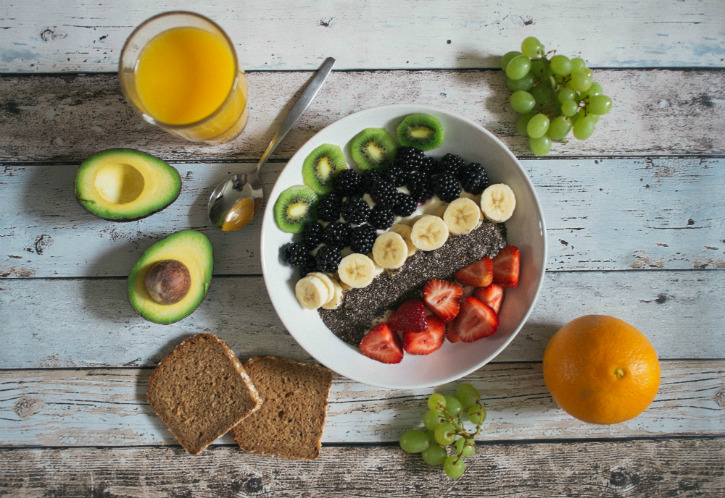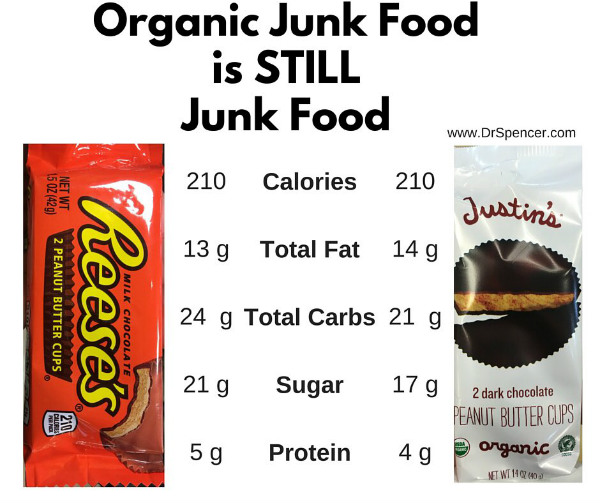 “Help! I can’t lose weight even though I eat real food. Most of my meals include lean protein and lots of veggies. The other foods I eat are fruits, low fat dairy, nuts, beans, and whole grains. I rarely eat sugar or junk food. Why can’t I lose weight?”
“Help! I can’t lose weight even though I eat real food. Most of my meals include lean protein and lots of veggies. The other foods I eat are fruits, low fat dairy, nuts, beans, and whole grains. I rarely eat sugar or junk food. Why can’t I lose weight?”
That’s an email from a reader of this website, and I’ve received countless ones like it. Many clients make a similar statement at the beginning of our working relationship about eating right but not being able to lose weight. The first course of action I tell them to take: “For the next week record everything you eat and drink; nibbles, tastes, and sips count. You don’t need to record the calories, just what you eat. For example: chicken breast, mixed veggies, a handful of M&Ms, and a cup of green tea, or whatever the case may be. Record every item.”
A week of this practice leaves many flabbergasted. Turns out they in fact do not eat the way they proclaimed in the initial email/conversation. A sleeve of Girl Scout cookies snuck its way onto the list, several slices of pizza, daily trips to the candy bowl at work, a bottle of wine on Friday night followed by a pint of ice cream, and the occasional 20-ounce soda appeared on the food log.
Sometimes people forget, or simply omit, certain foods and drinks from memory. By recording everything for a week, they see their food and beverage consumption in black and white, so there’s no denying what’s really going on.
This is why one of the first steps I recommend for someone who claims to have trouble losing weight is to record their food and drink intake for a week to get an idea of their average consumption (this works for building muscle and improving overall health, too). This hard data provides a framework going forward. How do you know what to correct if you don’t know where you need the most improvement? The food log provides this answer.
This exercise is not meant to conjure feelings of guilt for the foods you eat. Using the example from above the woman was quick to declare, “I feel terrible about myself and how much I failed” when sharing the food log with me. The purpose of the food log is to make you aware of what’s going on. This is a judgement-free exercise. We see what’s really happening (via the food log) and decide on the simplest changes to implement first.
My response when she declared to have “failed” was: “No, you didn’t fail and you shouldn’t feel bad. We have data and know what’s going on. Now we can make simple changes so you can get the results you want.”
Here’s what we do.
Having Trouble Losing Fat? Try This.
If you’ve tried counting calories and other typical diets, you may want to try this simple approach. More often than not, it works.
Step 1: Track everything you eat and drink for the next week. Do this during a typical week; for example, don’t do this if you happen to be traveling or on vacation. You want a picture of an average week of eating.
Step 2a: Using the results from the food log, identify the simplest changes to make that will lead you in the right direction (e.g., fat loss). Perhaps you realize you eat processed foods and snacks at lunch during the week. A simple change would be to take a real food lunch to work each day, and bring healthy snacks (e.g., nuts and fruit, Greek yogurt, etc.) to keep on hand too.
Convenience oftentimes (i.e., most of the time) wins over what’s “best,” so set yourself up for success and have good stuff within easy reach.
Step 2b: Get enough protein. Build your meals and snacks around a good source of protein, and aim for .7 to 1 gram of protein per pound of bodyweight each day. (If you’re obese use that guideline for a lower bodyweight you’re trying to attain. E.g.: if you weigh 230 pounds and want to get to 180, use 180 to calculate the .7-1 gram guideline.) You’ll have to track and count this at first, but after a couple weeks you’ll know how much protein the foods you eat most often have and it’ll be much easier.
Step 3: Implement the changes from Steps 2a and 2b, and keep another food log for a week or two. This way, once again, you know exactly what’s going on. Ideally you’ll have successfully practiced the simple change from 2a and increased protein intake every day of the week.
Helpful tip: I’m not suggesting you should avoid your favorite not-super-healthy foods (I despise labels like “cheat” or “dirty” — there’s just food) because that oftentimes leads to binge eating or disordered eating habits (and I know from years of personal experience with both). You can still enjoy things like pizza or ice cream or whatever you enjoy most. Either enjoy those foods less frequently and/or control the portions.
For example, I used to order a small pizza and eat the entire thing. Now, I split a small pizza and have a salad on the side. This way I’m still enjoying a favorite food, but not in the unnecessarily large quantity I used to. It’s not about depriving yourself and trying to be super disciplined and avoiding certain foods — just be smart and keep things simple by limiting the frequency you eat them, or decrease the portions.
Are you the kind of person who wants something sweet every day? Find ways to indulge your sweet tooth by either a) limiting the portion size as discussed above or b) choose lower calorie substitutes. Pay attention to the term “lower calorie substitute” and notice I didn’t say “healthy.” A lot of “healthy” dessert recipes still have the same number of calories (sometimes more) than the “unhealthy” foods they replace.
Here’s a great image from Dr. Spencer Nadolsky to bring this example to life.

Some argue the Justin’s option is “better for you,” but the calories are the same. Don’t let marketing or nutrition gurus fool you into believing the “healthier” version will help you lose fat and improve your health. Even though you may be eating better-for-you foods with the “healthier” options, calories matter when weight loss is the goal.
An example for lower calorie substitutes: swap out ice cream for a pudding cup or a few squares of chocolate, or whatever the hell your taste buds prefer. Drink your favorite diet soda to appease your sweet tooth. Lately I’ve been wanting to chow down on cookies and ice cream; while I enjoy these foods once or twice a week, I don’t want to get in the habit of eating them every day. I’ve been drinking a calorie-free soda a few times per week and that tames my current sweet tooth. (Diet soda may increase the craving for sweets for some people, but for others, like me, it’s nice when I want something sweet.)
Nutrition can be simple, if we allow it to be. It doesn’t have to be a stressful all (eat “perfectly” all the time) or nothing (slip up and then continue to make poor choices because you “screwed up anyway”) mentality.
The goal with nutrition should be to develop long-lasting, sustainable behaviors. The changes you make today need to be changes you can continue to practice a year from now. This way the improved body composition and health results you achieve next month will be maintained next year. You can count calories or macros or use traditional dieting methods if you prefer, but if you’ve tried those methods to no avail or want to try something simpler, give the alternative above a try for a few months and see what happens.
Note: want more detailed nutrition information than I provide here? Go to those who know their stuff: Precision Nutrition, Alan Aragon, Leigh Peele, Georgie Fear.
Related Article: 5 Health and Fitness Principles That Don’t Suck
What About People Who do Eat Healthy And Can’t Lose Weight?
Rarely, in my experience, has someone actually eaten nothing but meat, veggies and fruits, whole grains, and other real foods as shown via a food log and claimed they couldn’t lose weight. If this did happen it was usually because they were eating larger-than-realized quantities of calorie-dense foods like nuts, nut butters, and things like coconut oil (there’s this current obsession with coconut oil being deemed a “superfood” and some women are convinced they need to put it on, and in, everything).
If this is the case — someone is eating mostly real food but can’t lose weight* — I look for the simplest solution, and this one seems to work well: reduce the amount of fat-dense foods (put a serving size of nuts in a bowl instead of eating from the container, for example); omit fat-dense foods (stop putting coconut oil on everything, for goodness’ sake); swap a fat-dense food for a protein-rich food (Greek yogurt instead of full-fat cheese). These are simple ways to reduce calories, thereby allowing weight loss to begin.
And if by some chance you’ve been convinced to put butter and coconut oil in your coffee — stop doing that. Boom. You just eliminated hundreds of calories from your daily intake. (And avoid such health and fitness bullshit going forward.)
*Note: if you have unexplained weight gain, weight loss, or reducing calories isn’t producing weight loss, go see your doctor. Get blood work and see if there’s an underlying issue that needs to be addressed.
Another Option: Stop Focusing on Weight Loss
Guess what: you don’t have to focus on losing fat. You can focus on something else like, oh, I don’t know, getting stronger and eating things that make you feel great. Instead of thinking about all the foods you “shouldn’t” eat focus on the abundant variety of awesome foods you can eat. Instead of looking at exercise as a means to just burn calories it can be something you do to feel awesome and unleash your body’s potential.
Believe it or not, fitness doesn’t have to be about getting abs, a rounder butt, torching fat, or fixing flaws. I’m not saying those goals are bad — you should do whatever the hell you want with your body — but those things can be a means to an end instead of an end themselves. In other words: make getting stronger in the gym a priority and eating more of the things that are great for you the focus in the kitchen. Allow weight loss to be a side-effect.
Like what you read? Never miss a thing — sign up below to receive the newsletter. You’ll get the Beautiful Badass Mini Course as a free gift.